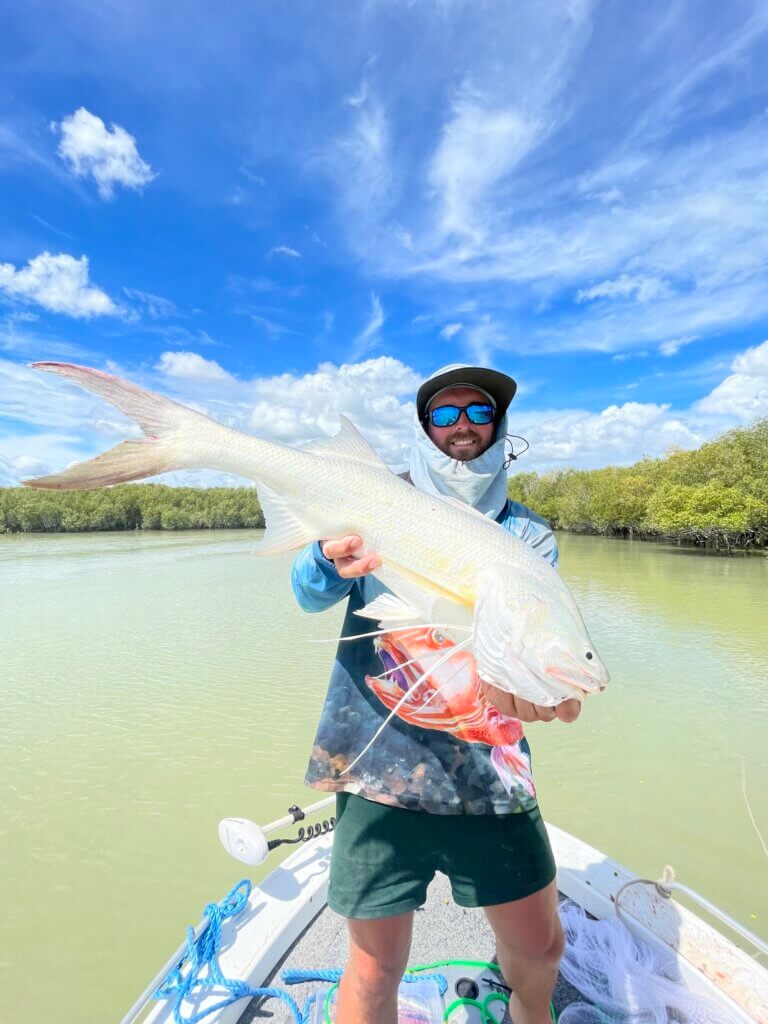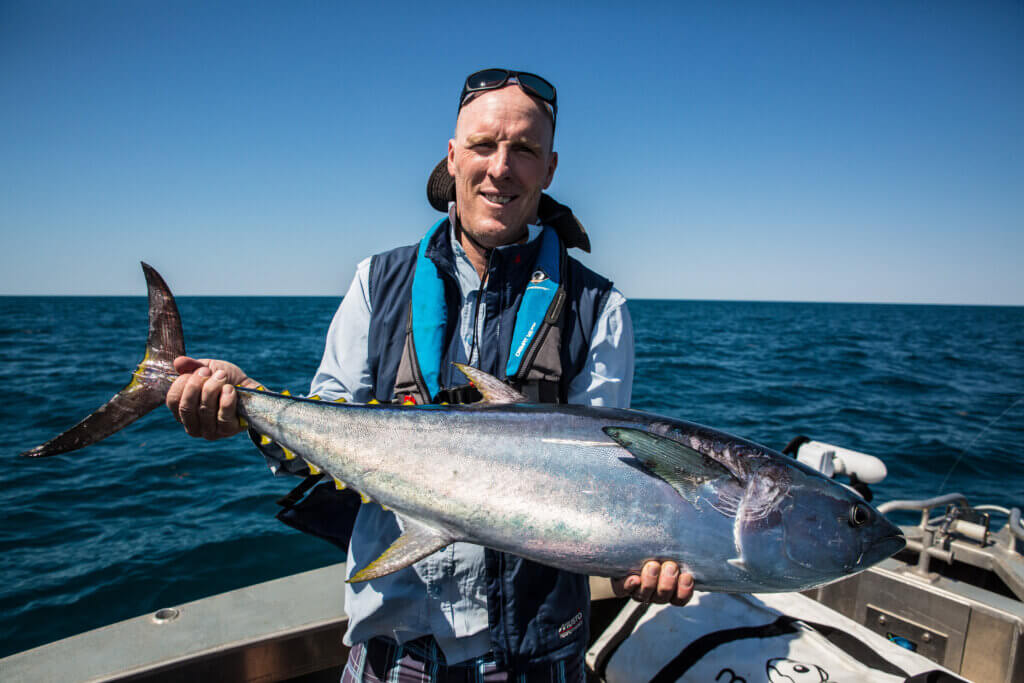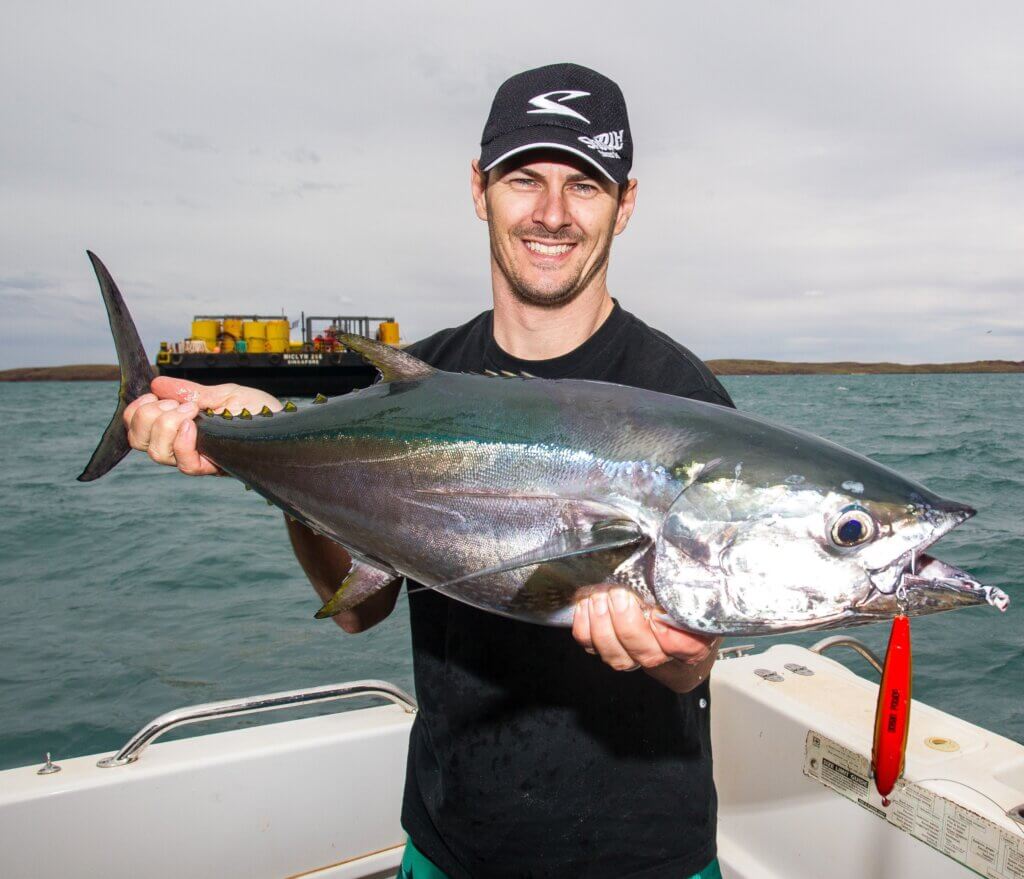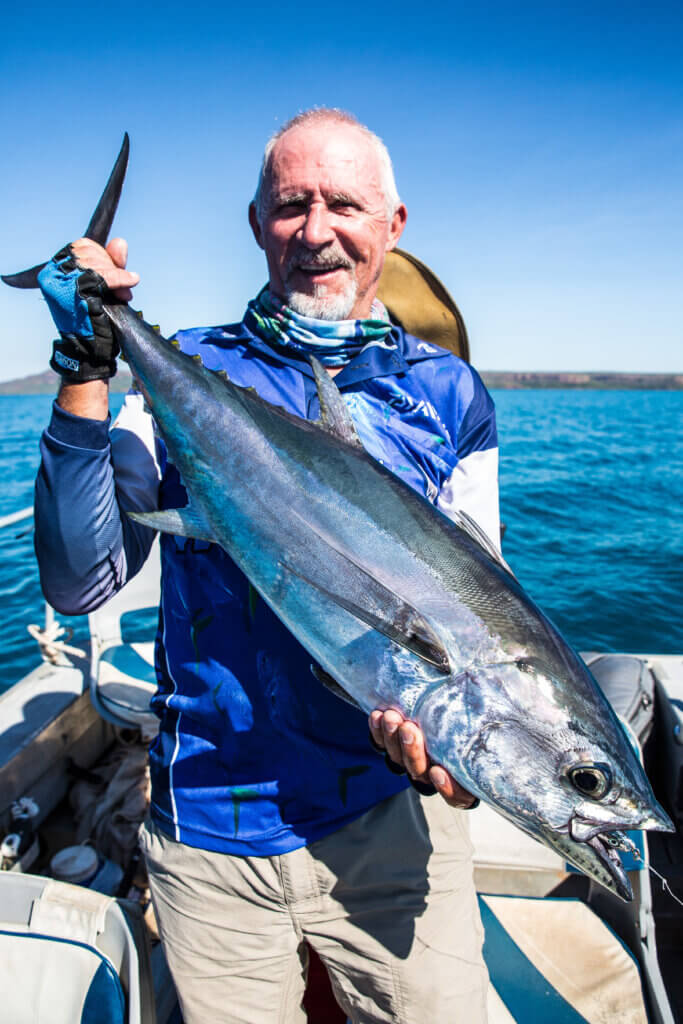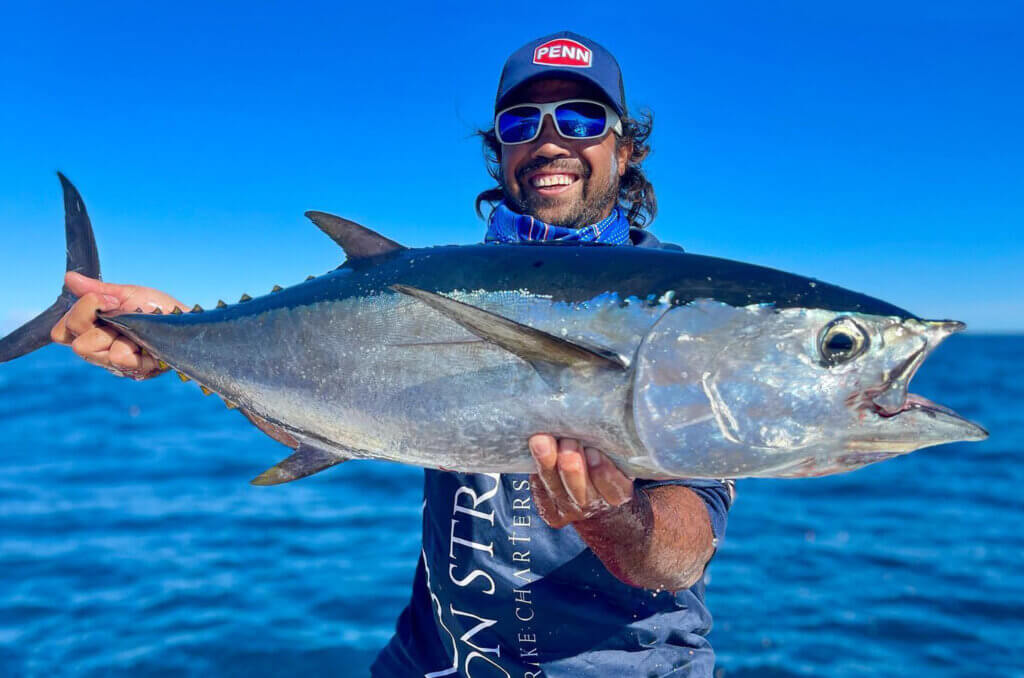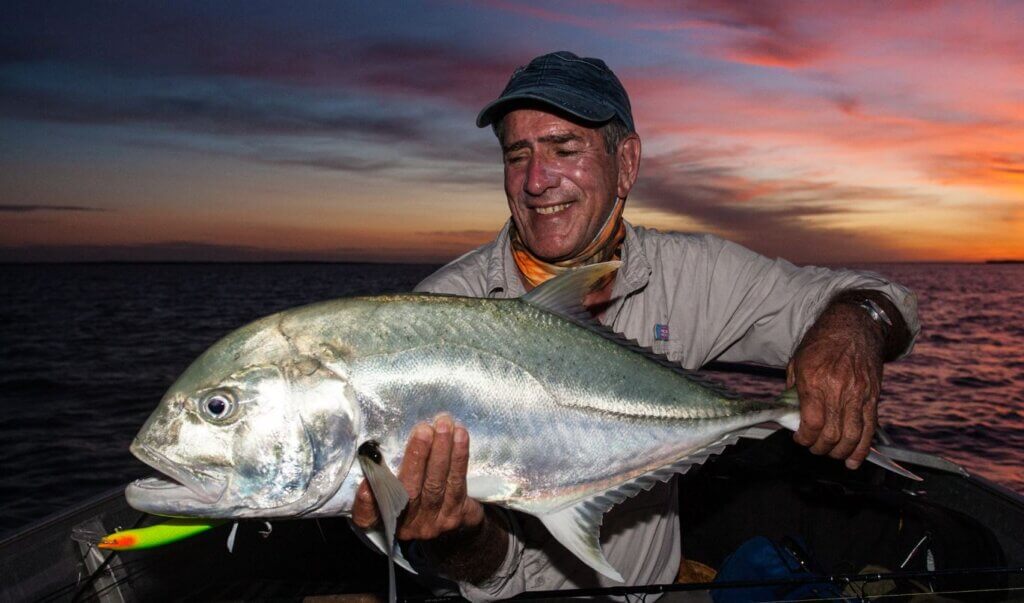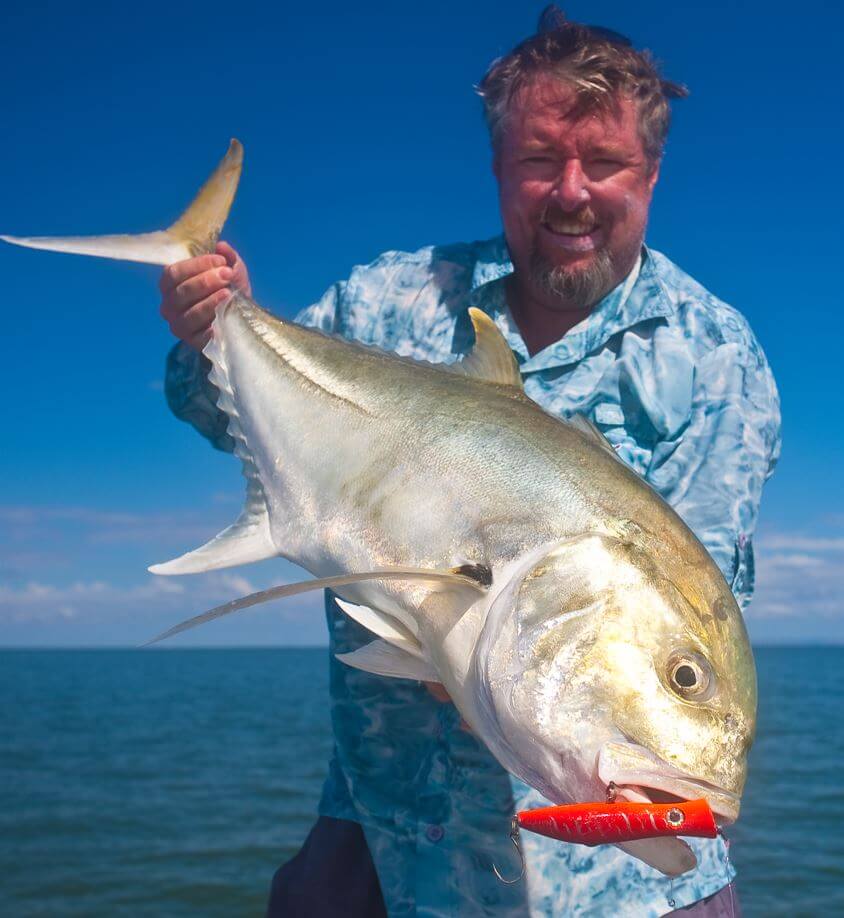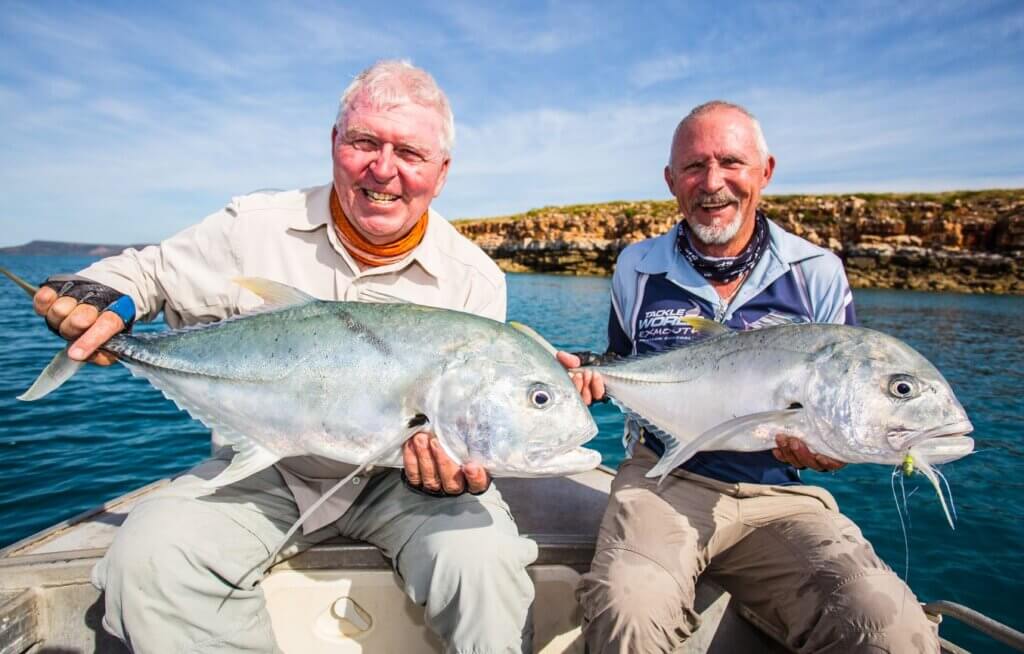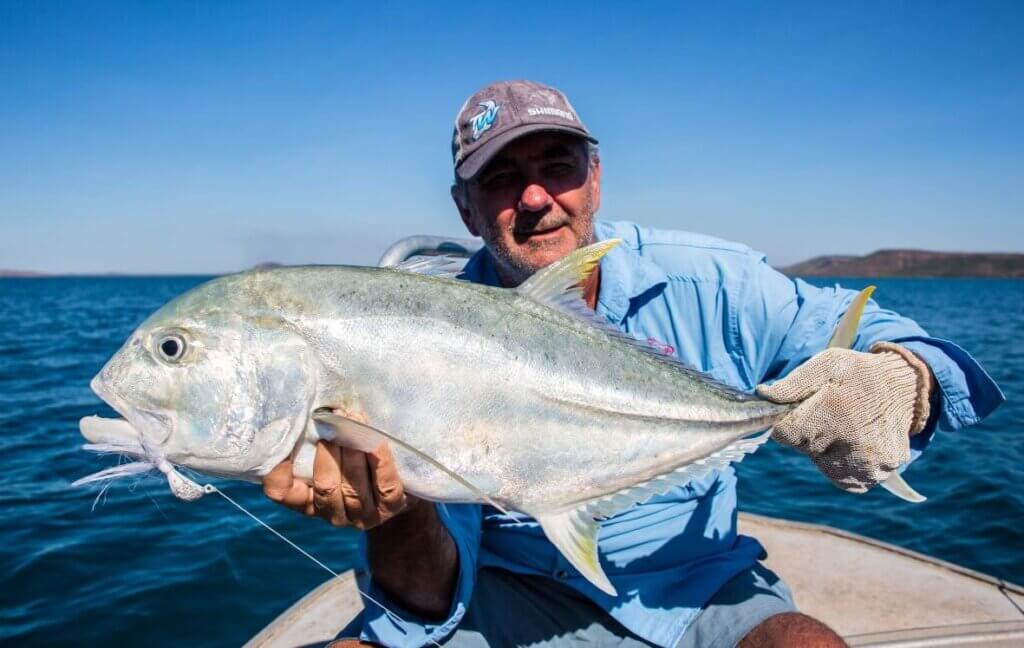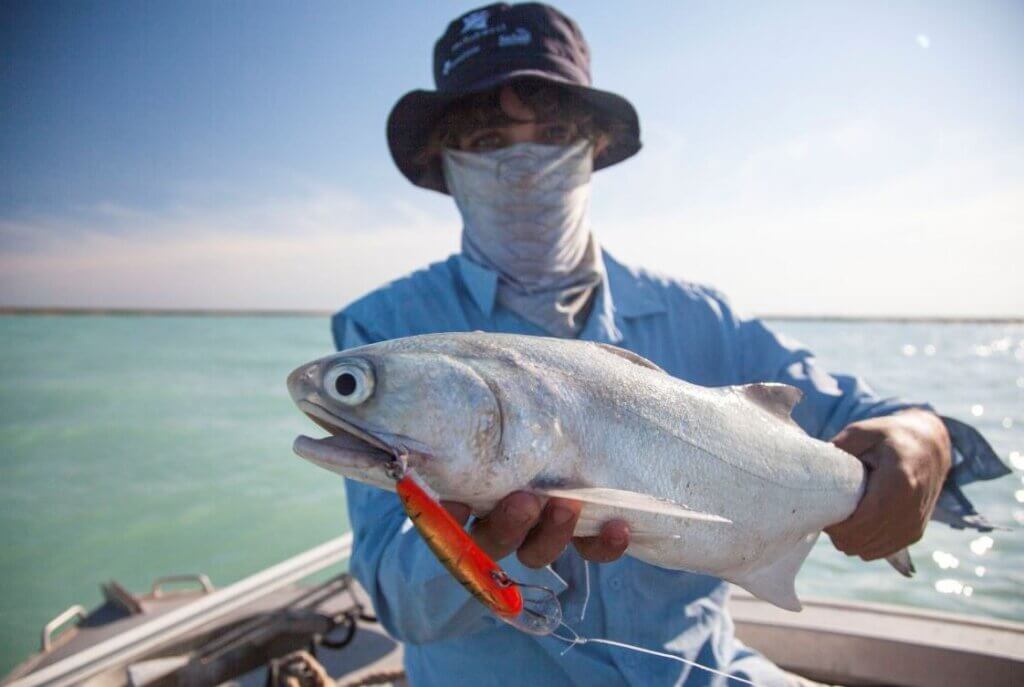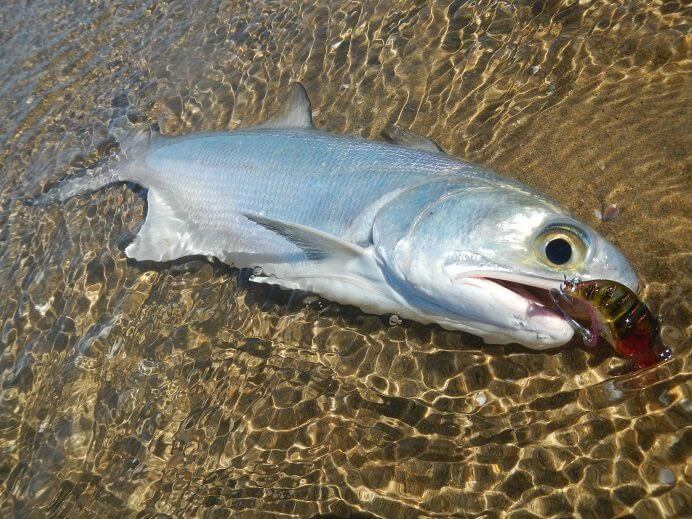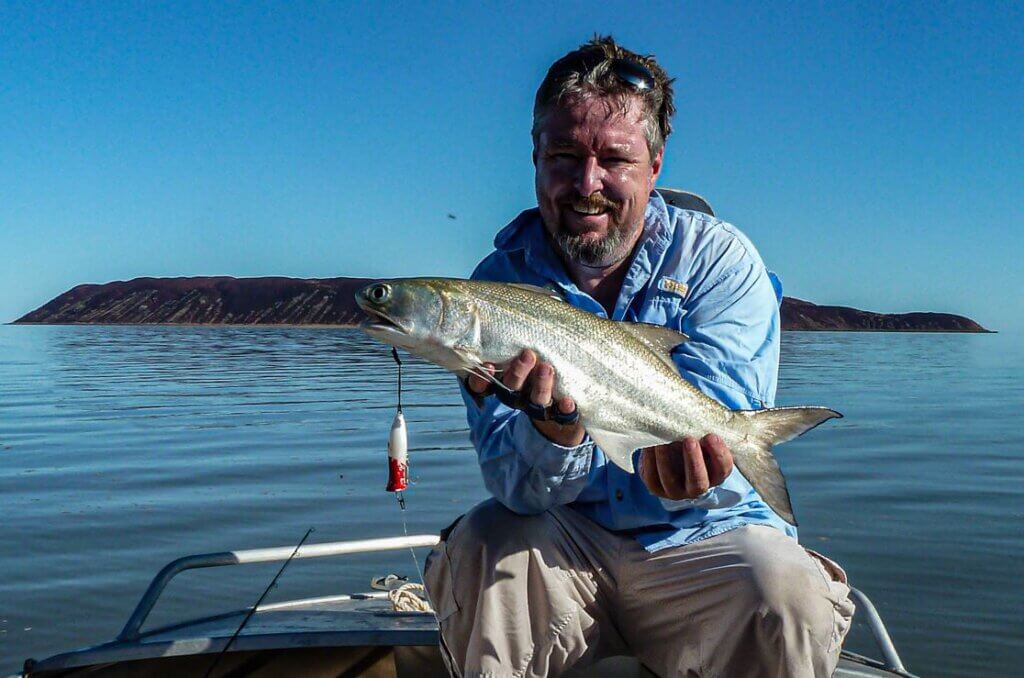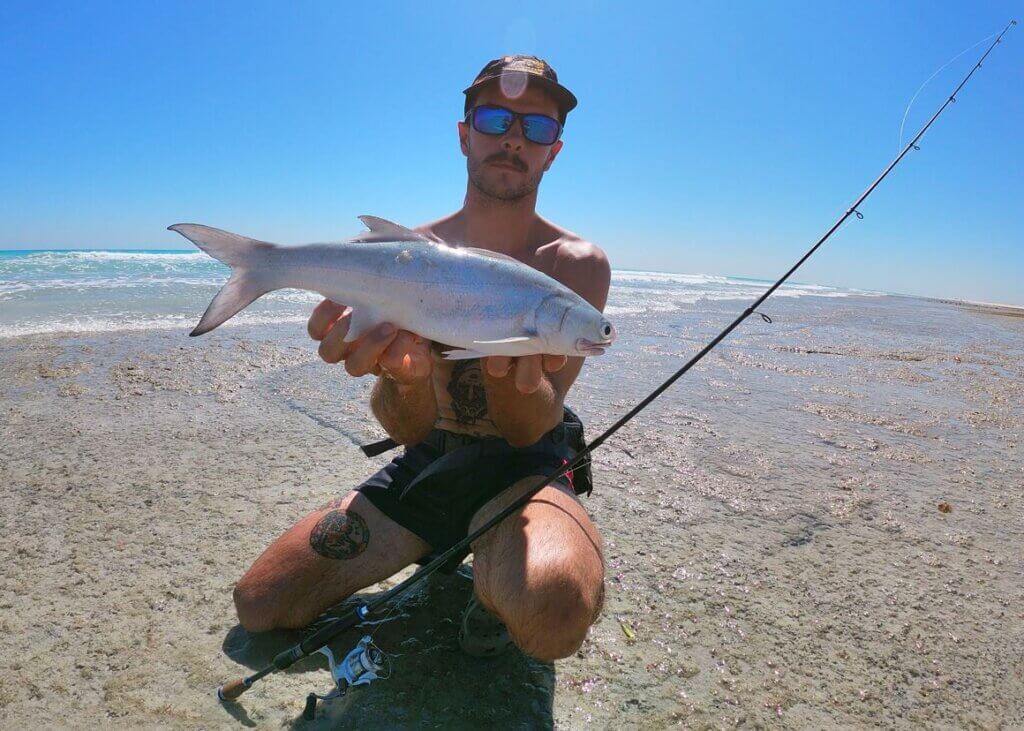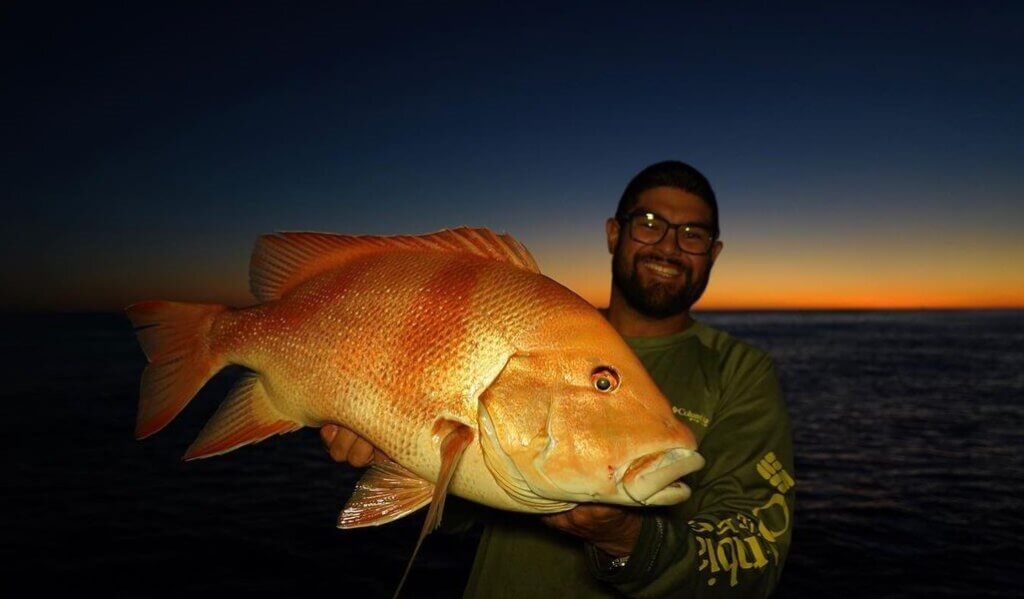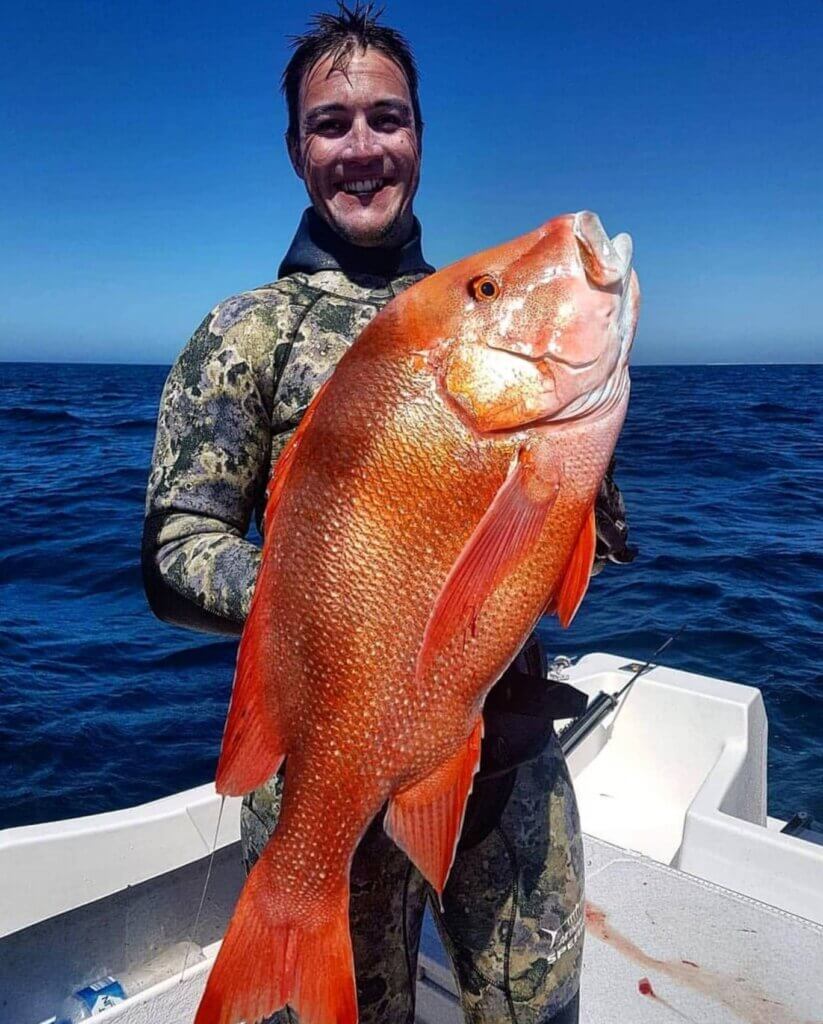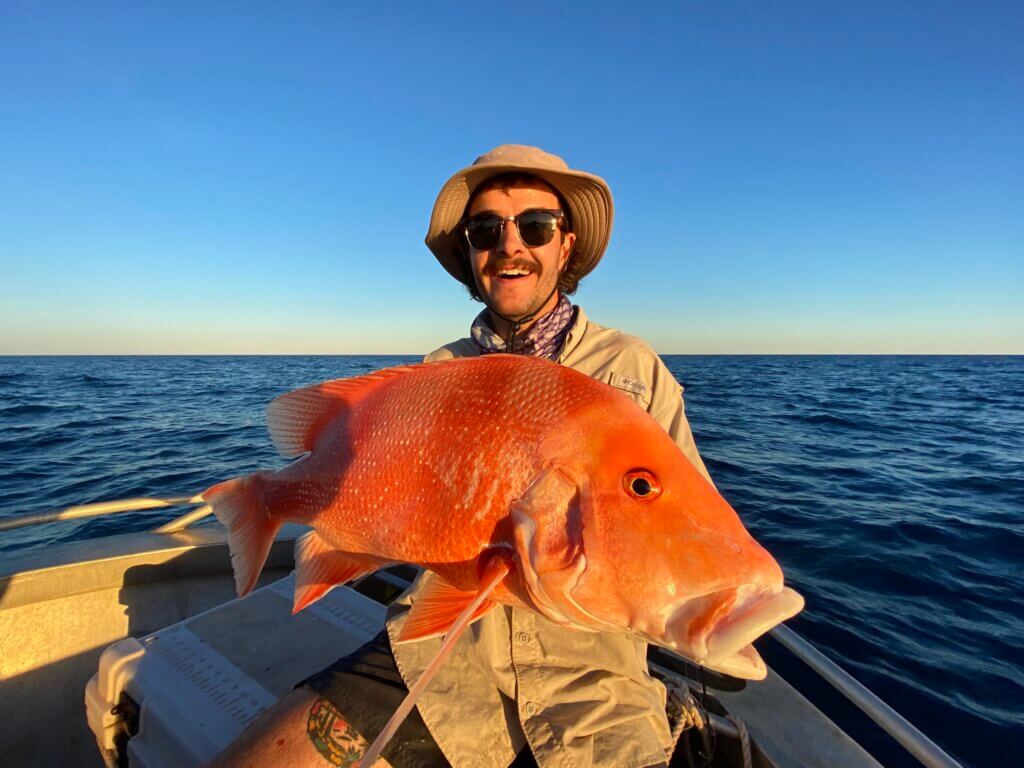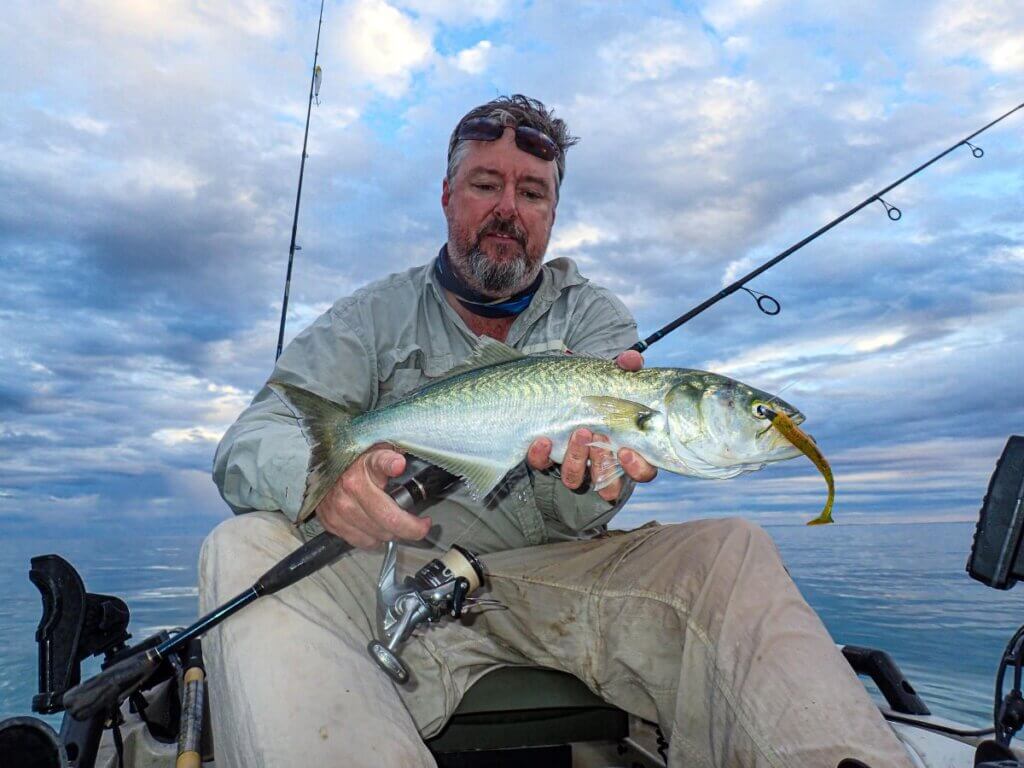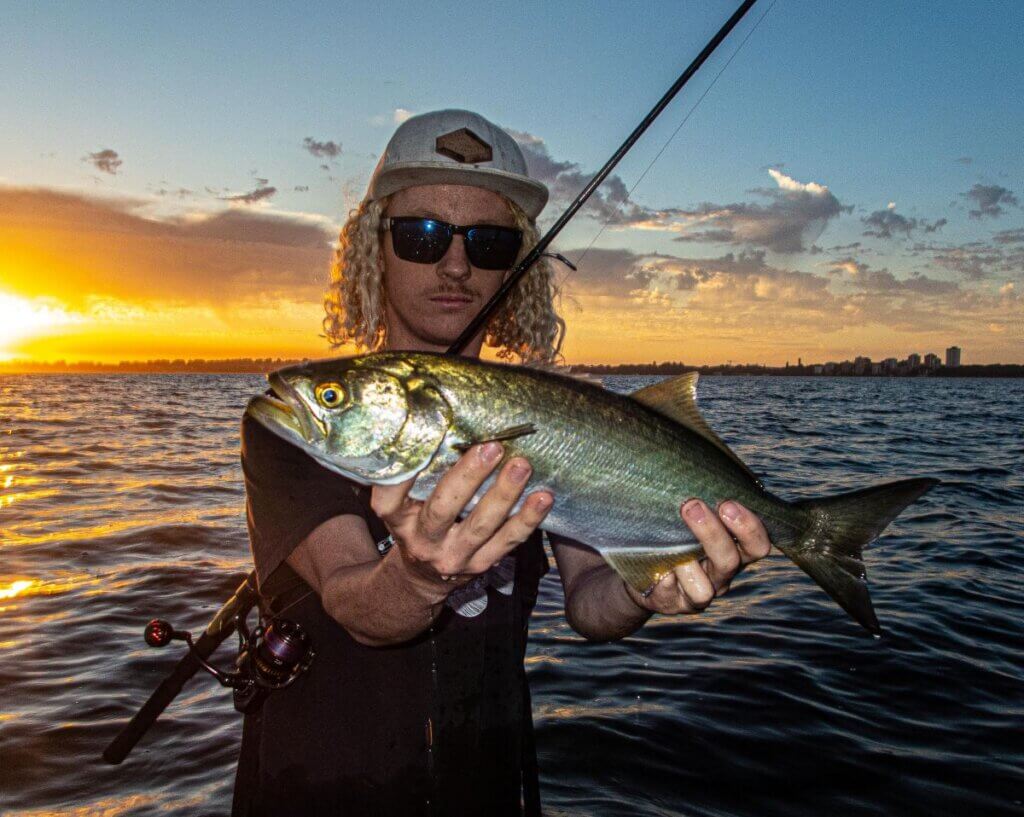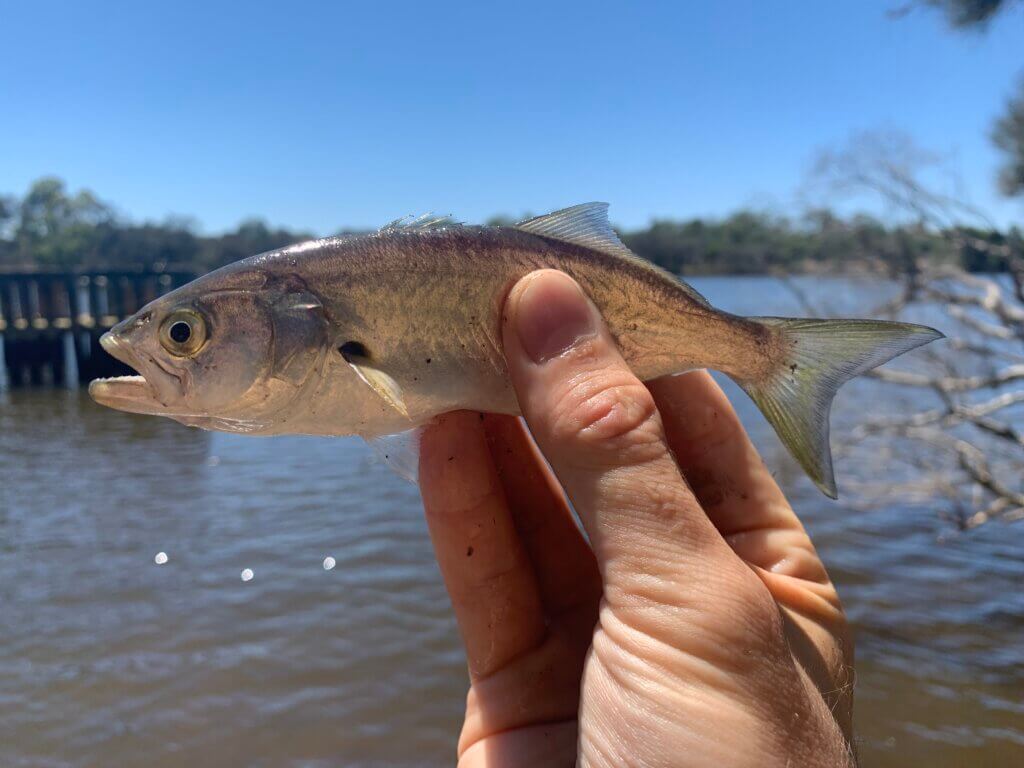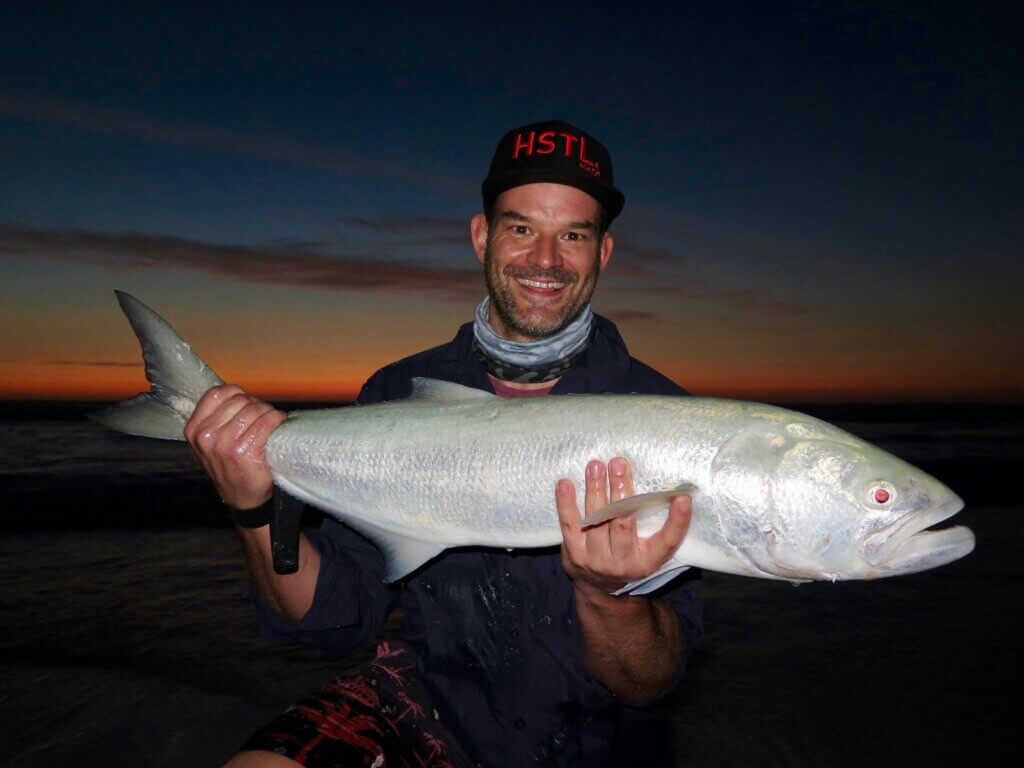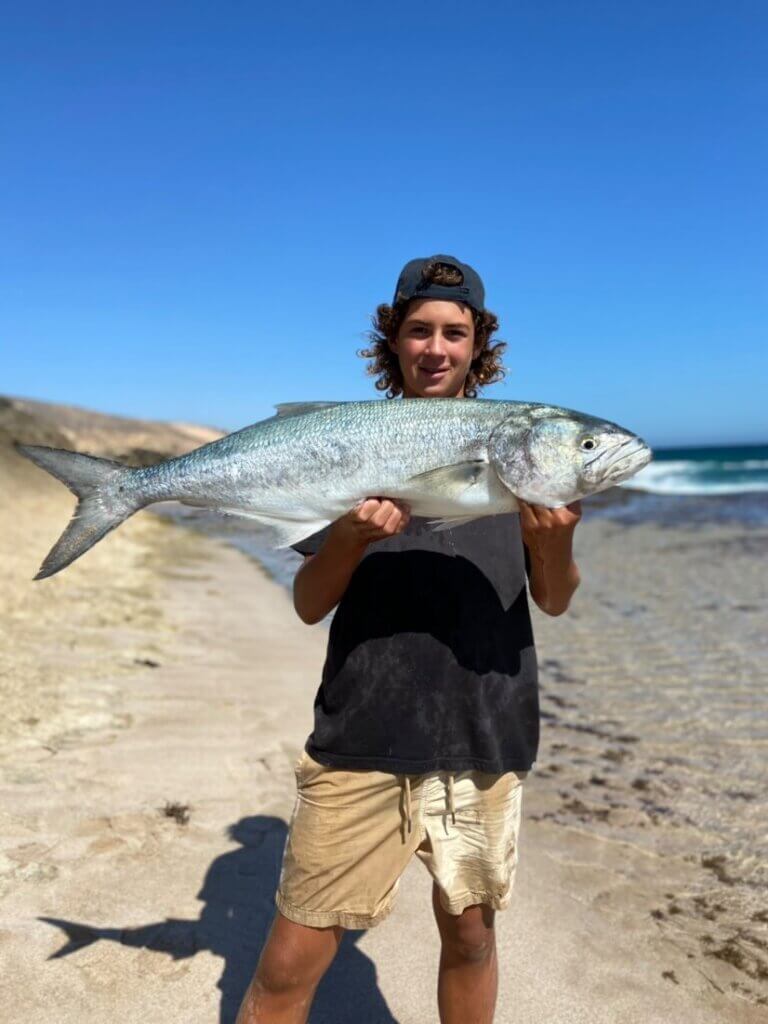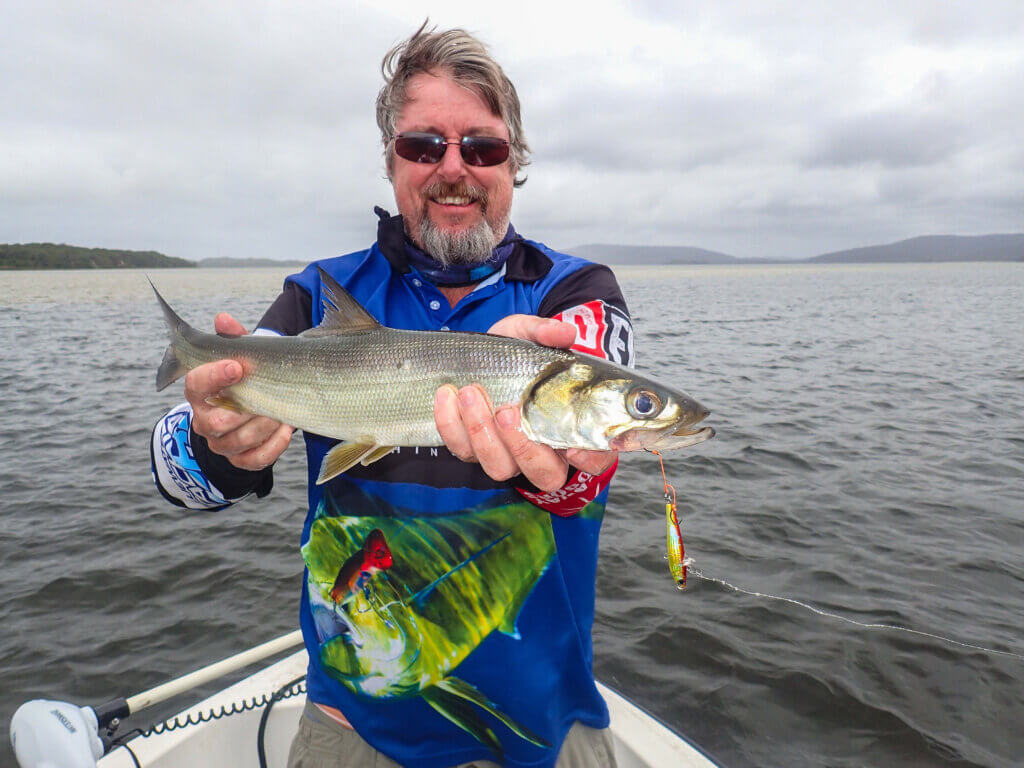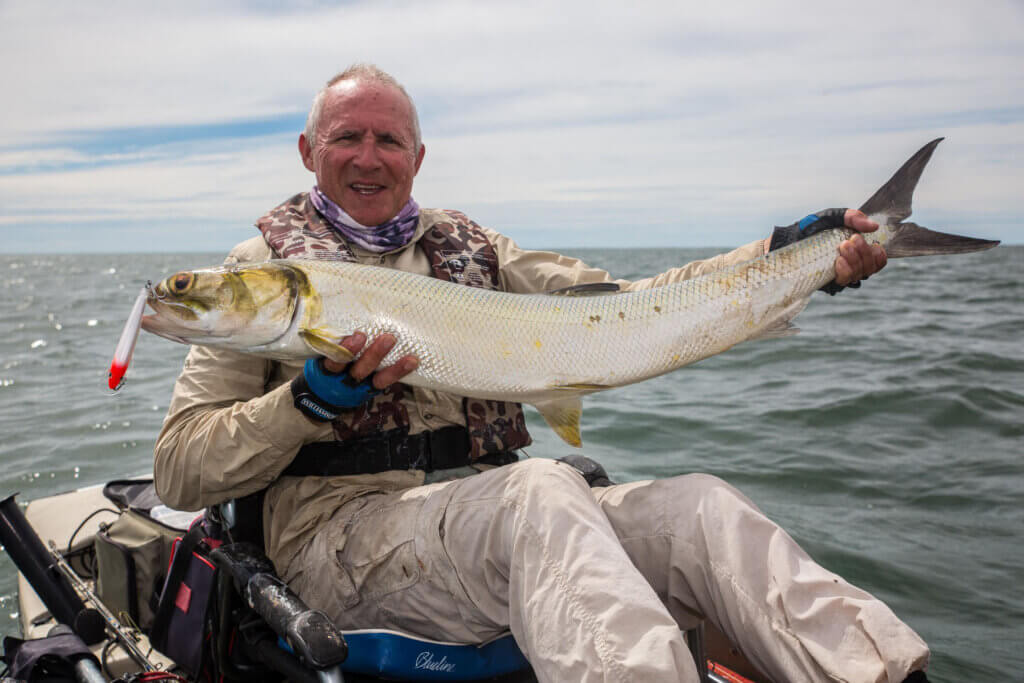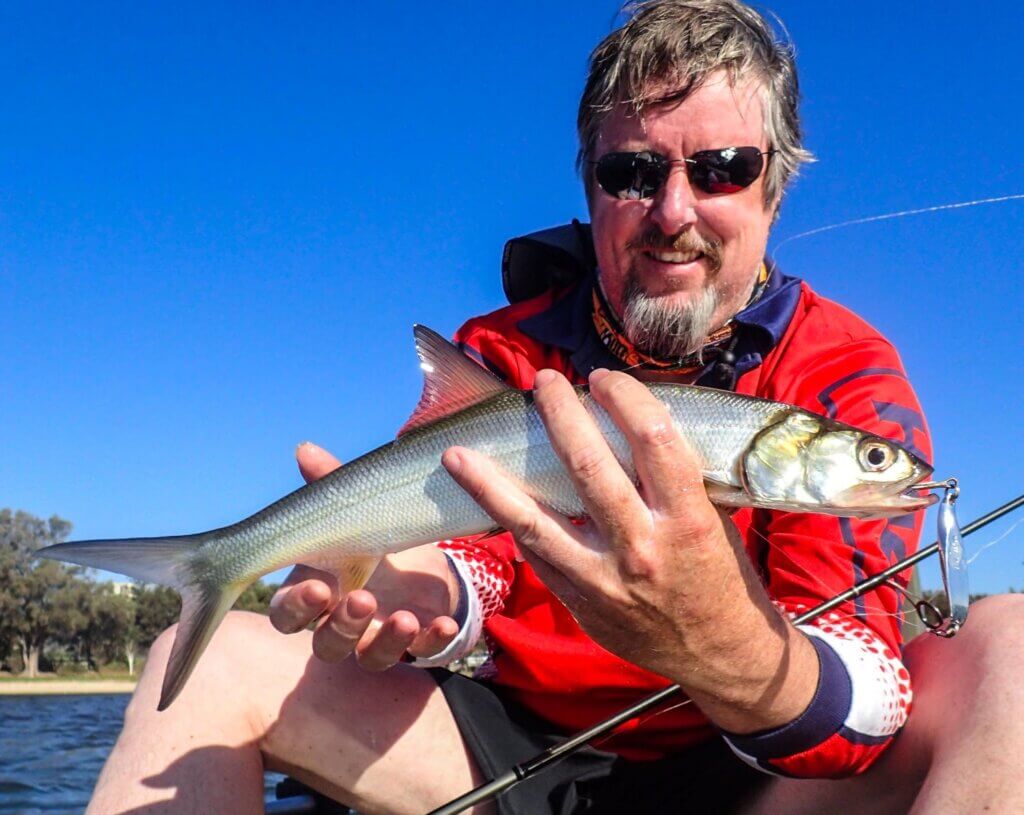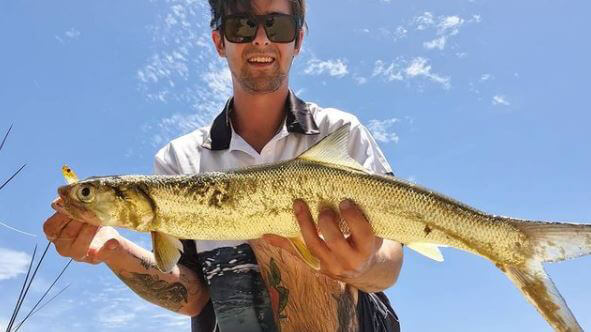I must admit, writes Western Angler editor Scott Coghlan in this week’s edition of Scott’s Species, if there is one fish I wish I’d caught more of, it would be threadfin salmon! Fantastic looking and with a phenomenal burst of speed, I reckon I’d take one real big threadie over a 1m barra if I was forced to choose.
Species: Threadfin salmon, Polydactylus macrochir
Eating: Four star
ID: Filaments behind gills make them easily identifiable. Threadfin salmon have five pectoral filaments, while blue salmon have four. Pectoral fin is divided and often have yellowish colouration.
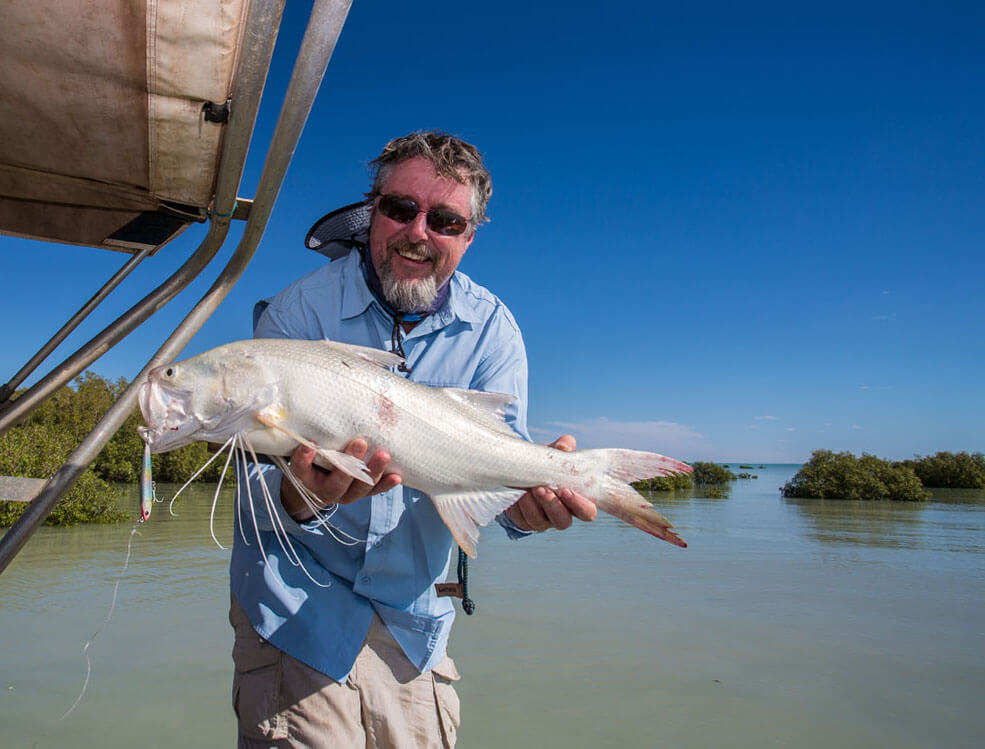
King, or giant, threadfin are usually found from Exmouth north and sadly none of the ones I have caught have live up to those colossal names.
Nonetheless I find them a fascinating species and live in hope that the drought will break one day and I will have a red-letter day on threadies, which can grow to a whopping 1.7m and 45kg.
I can’t imagine seeing one that humongous!
Arguably the most iconic place to catch threadies is Broome’s stunning Roebuck Bay.
While they are found right through the Kimberley and Pilbara, Roebuck Bay is a top quality fishery for them, with an abundance of the sort of environment they love, often travelling in schools.
This was only enhanced when commercial fishing was removed from the area.
WATCH: Reborn in Roebuck – A Salmon Tale
The threadie fishing has since improved dramatically and there are consistently good catches right through the bay these days.
Earlier this week, as I wrote this piece, a mate caught a 1m-plus threadie in Broome.
An inshore species, threadfin salmon are generally found in shallow water close to the coast, preferring to hunt around the dirty water in the tidal areas of creeks and rivers, such as the expansive mud flats of Roebuck Bay.
Finding threadies can be challenging as a spot that fired one day can be dead the next, with the mobile nature of these fish.
Keep moving around until you find them. On an incoming tide they will move up into creeks, and then drop back out with the outgoing water.
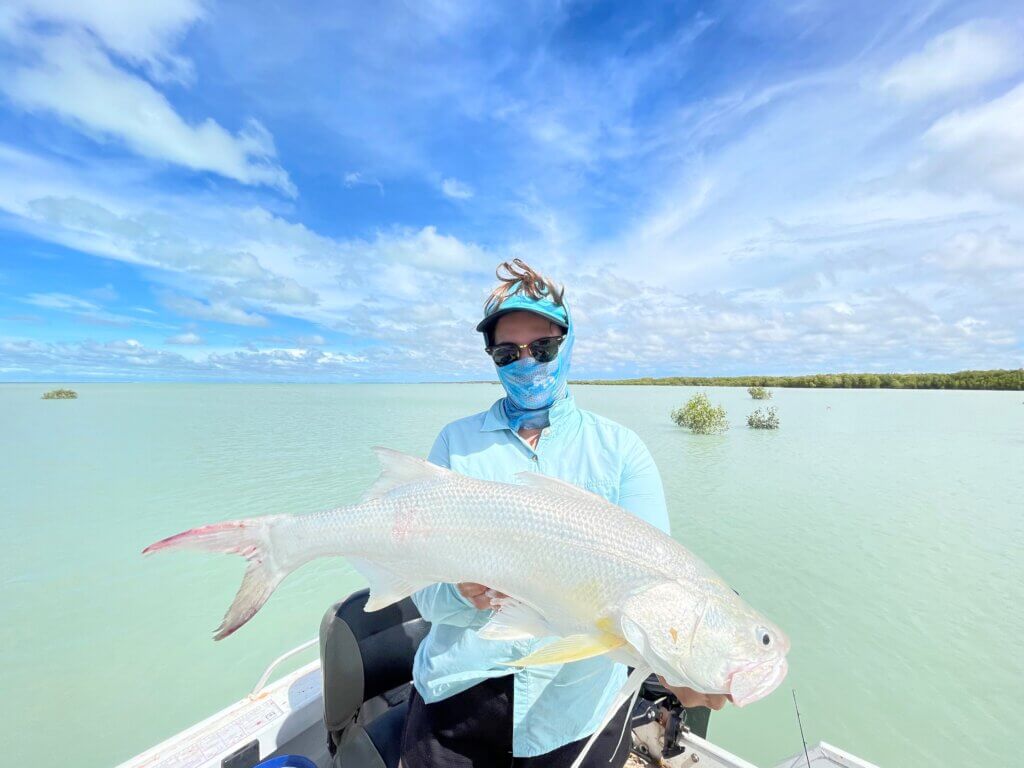
Threadies will take both baits and lures, and some people like to sight cast for them when conditions allows.
However, they are usually hard to spot, especially when big tides stir up the water.
Sometimes big splashes in the chocolate-coloured water will indicate the threadies are around and feeding.
Prawns are regarded as prime threadie bait around Broome. I have certainly done okay using prawn imitation lures around creek mouths.
Trolling shallow running lures such as bibbed minnows through likely areas can also be productive.
Tackle doesn’t need to be heavy, but threadfin are a strong opponent and take some stopping, especially if there is structure they can use to their advantage.
I prefer 12kg-14kg spinning tackle, but many others would prefer using baitcasters, but that is a personal choice.
Like barra, threadies change sex, from male to female as they get up in size to around a 1m.
